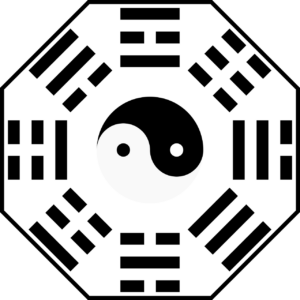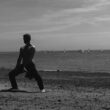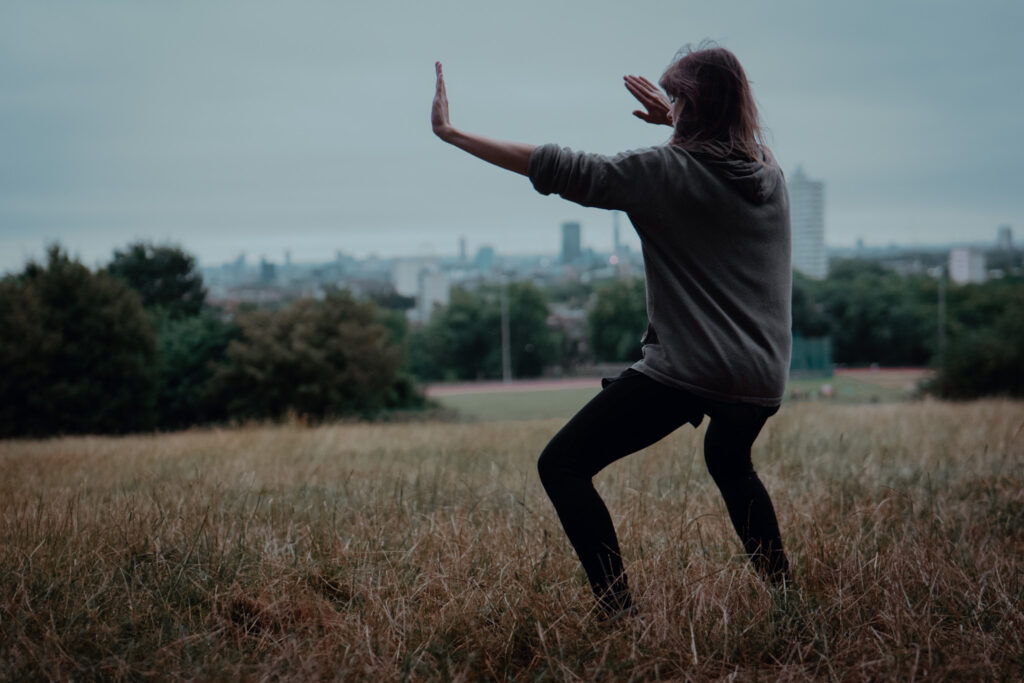Martial arts can be a fascinating practice, providing lifelong interest and fascination.
At their very best martial arts combine elements of true artistry, physicality, sport and psychology.
Some martial schools might concentrate only on heavy conditioning, padwork and sparring. This approach will probably develop practitioners who are effective up to a certain level, but they will experience many injuries and probably won’t rise to the highest levels of skill.
On the other side of the spectrum you will find the technicians, who obsess over technical details and theories, but spend little or no time in the stressful environments of combat or wrestling. This approach yields some subtle skill development that unfortunately will crumble in the face of an aggressive and determined opponent.
The best approach is balance. To appreciate what can be gained from the refined and delicate but also appreciate the rough and tumble side of practice also.
Luckily this art comes from a lineage where we have access to hundreds of years of ‘theory’ writing, which when learned and applied in training helps us to level up, and become more effective practical martial artists. So it’s a useful and enjoyable exercise to regularly have a look at the more ancient training texts and try to make use of their ideas in our daily practice and in partner sessions and so on.
The foundational idea of this martial art – The thirteen dynamics
The ancient Chinese developed the idea that the whole world is composed of two relative, yet opposing forces and called this idea Tai Chi – Yin and Yang bound together. The forces are always bound together in one way or another but together give one another their opposite quality. Hard, soft, night, day, long, short, male female etc.
They can be identified on their own but need an opposite partner to give them their quality.
Mathematically they identified 8 ways of using the Yin and Yang combinations as follows; The broken lines are Yin whilst the unbroken represent Yang.

Ancient martial arts masters enjoyed the simplicity and elegance of these ideas and created a martial art based on these ideas, becoming known and Tai Chi Chuan (Chuan means martial art) or also Thirteen Dynamics.
They used the idea of the eight possible expressions of Yin and Yang combinations and applied it to the human body, coming up with eight fundamental ways of using your own body to create power and also destroy an opponents position.
They combined these eight basic force generating ideas with the development of skilful movement in the five main directions, forward, backwards, left, right and perfect stability. Together these eight forces and five directions became known as thirteen dynamics.
The ideas is that once you become skilled in these forces and directional movements you can generate and infinite amount of techniques, adding in punches, kicks, sweeps and throws as combinations of these force ideas.
At the fundamental level (which any learner should master) the eight major forces are as follows:
1. Pang – a subtle expansive force upwards, designed to divert oncoming forces and leave the opponent off balance.
2. Li – Yielding force, usually expressed to the sides, also diverting an opponents pressure away from our centre of gravity
3. Tsai – skilful use of forward thrusting, to be used at weak point of the opponents structure to send him off balance
4. On – Pressure applied downwards on the opponent, particularly after they have been put off balance using a previous method, crushing them to the floor
5. Tsoi- applying leverages to the opponents body and various place making them loose their balance completely and become ‘uprooted’
6. Lit – The use of spirals offensively and defensively in a variety of ways, using both striking and grappling techniques
7. Zhou – the skilful use of the elbow and forearm to defend and neutralise attacks and also to strike or manoeuvre the opponent
8. Kao- Using the torso to defend strikes from the opponent and also using it to both strike him or apply leverage based techniques such as locks etc.
The emphasises of the training process is to always bring your emphasis back to using minimal force to defeat your opponent, leading to ever greater skill development. Relying on strength and power will only take you so far.
Learn more about the Thirteen Dynamics





